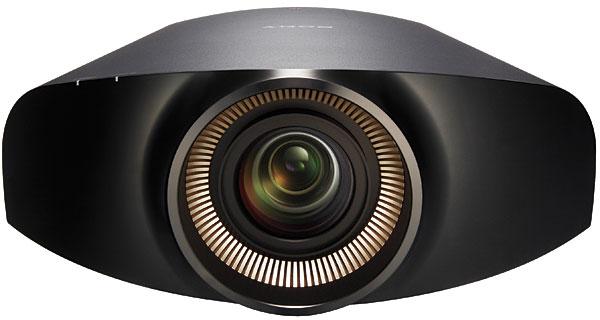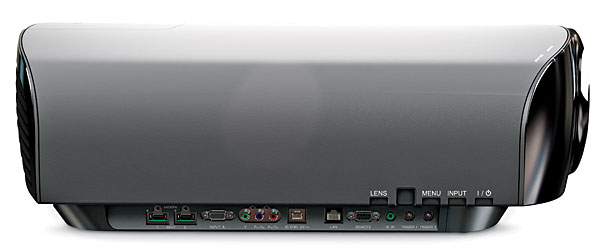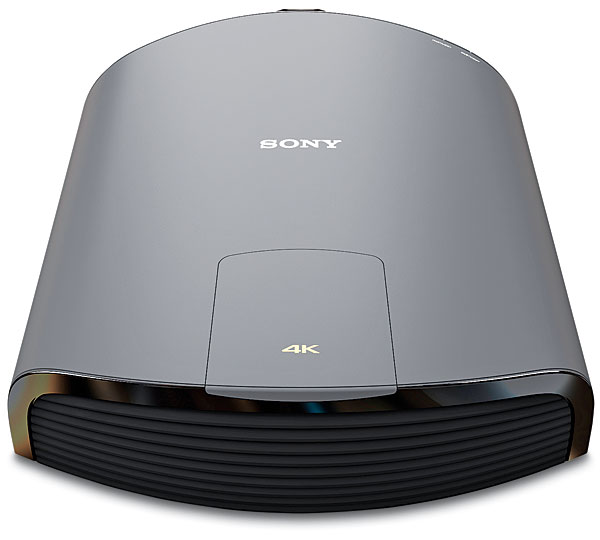Sony VPL-VW1000ES 4K SXRD 3D Projector: Take 2

Editor's note: This is an addendum to our earlier review of the Sony VPL-VW1000 4K 3D projector, covering only its 3D picture quality. Click here for the orignal review.
In our February 2012 issue, we published an exclusive first look at Sony’s new top-of-the-line projector. In addition to stunning performance with conventional, high-defintion, consumer material, the VPL-VW1000 employs 4K imaging chips, offering four times the resolution of standard high-definition video.
The snag here, of course, is that apart from a few meager, downloadable shorts and still photos from a digital camera, no 4K material is currently available to the consumer. For review purposes, Sony loaned us genuine 4K software loaded onto a server. While this taste of a possible video future promised much, a wider range of such material is really needed to give the format a fair airing.
Nevertheless, the Sony’s ability to play back 4K source material offers a level of futureproofing that nothing else on the market currently provides at anywhere near its price—although that price is a not inconsiderable $25,000. That February review is available online for those who haven’t seen it and want the full details, together with other articles from that same issue on the present state and promise of 4K, both in the theater and at home.
The VPL-VW1000 will also play back today’s source material in 4K, upconverting it with its own onboard video processing. In fact, you can’t bypass the Sony’s processing without either a native 4K source or some other external 4K upconverter. In the latter case, the Sony will simply handle the input as it would any native 4K source. I shouldn’t need to emphasize—but I will—that whether a source is upscaled in the projector or externally, it will not produce the same level of detail as native 4K conent. Just as upconverting a standard-definition source to, say, 1920x1080 does not give it genuine HD resolution, nothing but a native 4K source can produce the full impact of 4K.

The argument has been made that spreading out a 1920x1080 source, the best currently available to a consumer, over more and smaller pixels can reduce the visibility of those pixels and smooth out any visible jaggedness in what should be a smoothly structured picture. That’s true, but the importance of such smoothing will depend on how close you sit and how large your screen is. We discussed this matter in some depth in our review. But whether or not you find the pixels in a standard high-definition image visible (standard high-definition is an interesting turn of phrase to refer to HD displayed at its native 1920x1080), there’s no denying the VPL-VW1000’s stunning, big-screen, 2D performance. Of the staff members and visitors who had a close look at the projector, including yours truly, only one thought the result was slightly softer than he was used to seeing on his own DLP projector using a much smaller, lower-gain screen. The images from the Sony were crisply detailed to most of us, superbly colored, and at just over 20 foot-lamberts (on a 118-inch-wide, 16:9, Stewart Filmscreen StudioTek 130 screen, gain 1.3) in the projector’s High lamp mode, produced enough 2D brightness to satisfy all but the torch-mode obsessed.
When it came to 3D, however, that 20 ft-L on the same screen dropped to about 2 ft-L. Granted, the 3D brightness level you’ll see in most theatrical 3D presentations, short of IMAX theaters that use two projectors, is unlikely to exceed 4 ft-L even if you’re lucky. Nevertheless, after watching 2D at 20 ft-L on the Sony, switching to 3D at 2 ft-L was not exactly a thrill.
A New Production Sample
Following this experience, our Sony contacts confirmed that our preproduction review sample had not been fully set up at the
factory for 3D. They offered to send us a production sample as soon as one became available. The replacement arrived shortly after the mid-January 2012 CES.

I immediately confirmed that the new production unit’s 2D performance was every bit as impressive out of the box as that of the first sample. In fact, after nearly 200 hours of break-in, it produced 26 ft-L of peak white on the StudioTek screen in its High lamp setting (Cinema Film 1 mode, Advanced Iris in Auto Full—one of its dynamic modes—and Contrast at 85)—even higher than that of the earlier unit. If this is too bright for you (and it likely will be, suggesting that for 2D the VPL-VW1000 can light up an even bigger screen), it can be reduced by turning down the Contrast slightly, switching to the Low lamp setting (where it produced almost 18 ft-L), using the projector’s manual iris (although that defeats the dynamic-iris feature), or some combination of the three.
In measuring 3D on the new unit, I tried three of Sony’s preset 3D modes: Cinema Film 1, Reference, and Bright Cinema. To minimize any concerns that a too-low result in any of these 3D modes might be blamed on our own custom settings or calibration, I made only two changes to the Sony-programmed, 3D default settings in taking my measurements: I turned off Motionflow (veteran readers know how much I love motion interpolation—not!), and backed off on the brightness a few steps to produce a more accurate black level as viewed through the 3D glasses. Without the latter change, some images looked slightly washed out in the default settings. For all of these modes, Sony’s defaults set the unit with Contrast on Max, Gamma Correction Off, and High lamp mode. The Advanced Iris feature is not available in 3D; by all indications, the iris is fully open. I also left the 3D Brightness setting in the 3D menu in its High default position.





























































